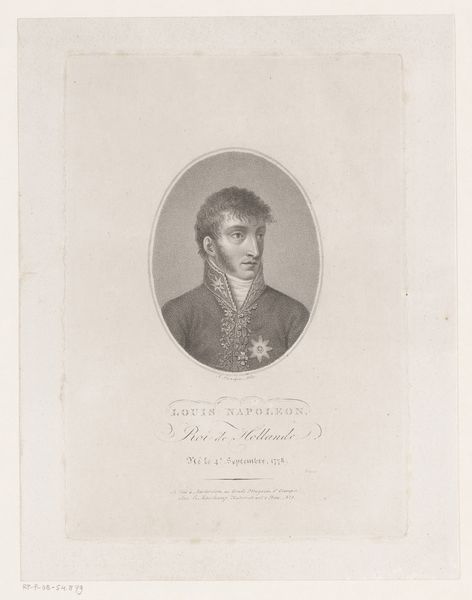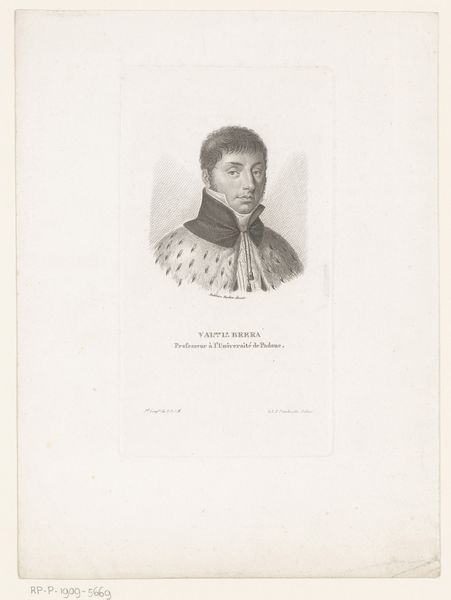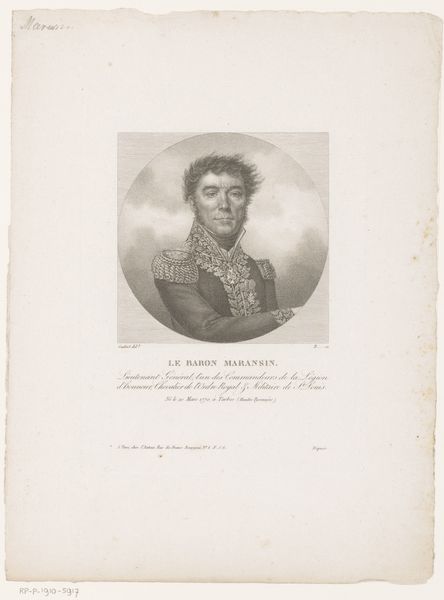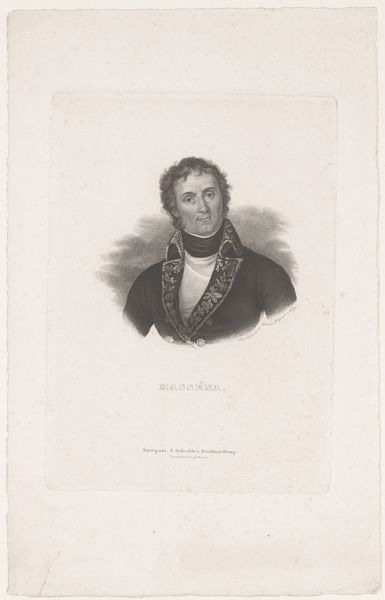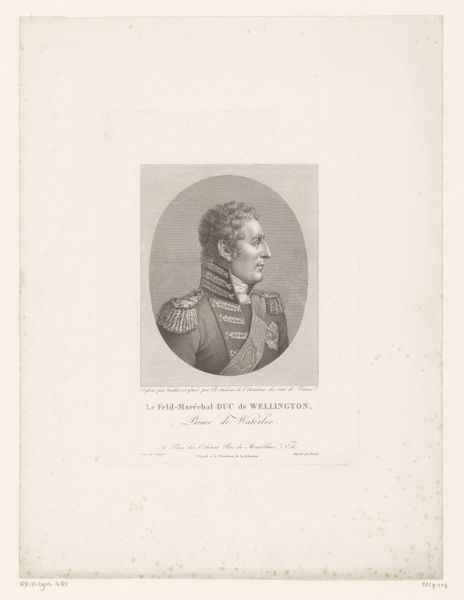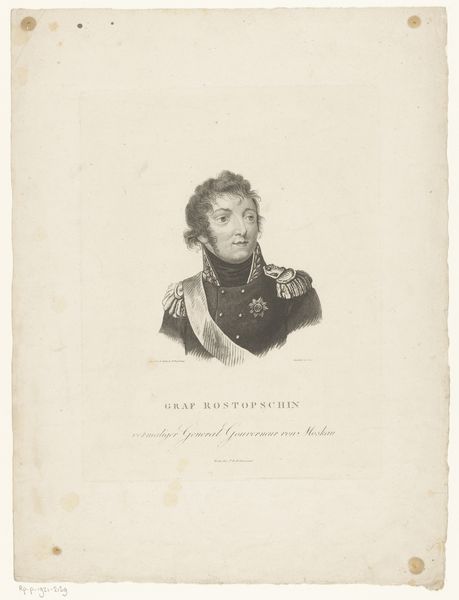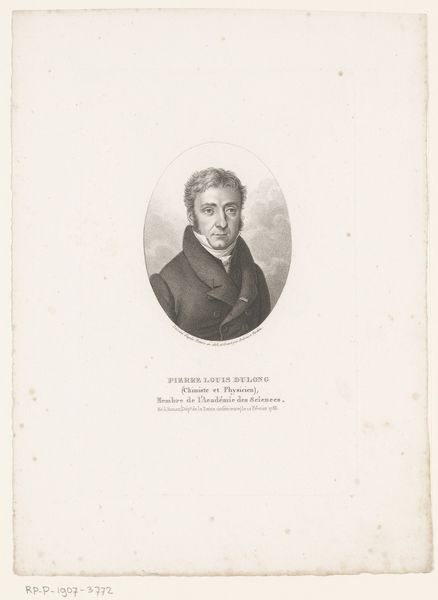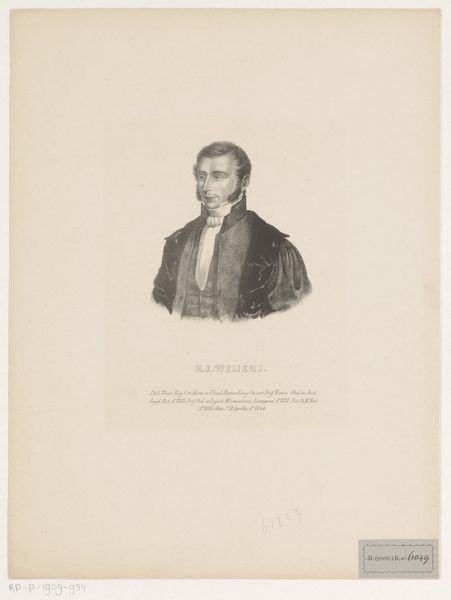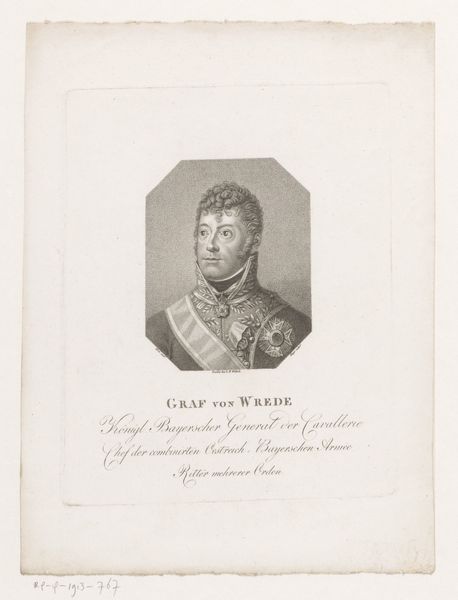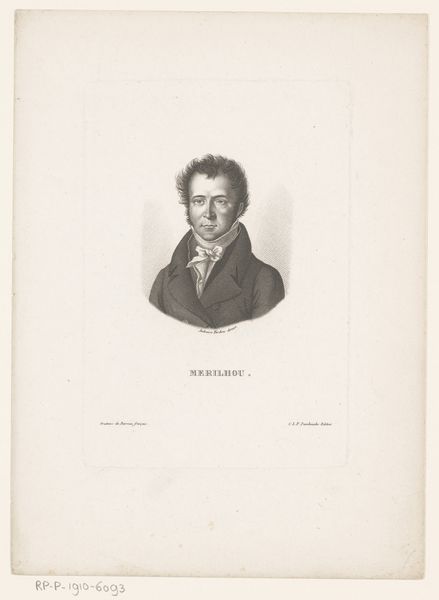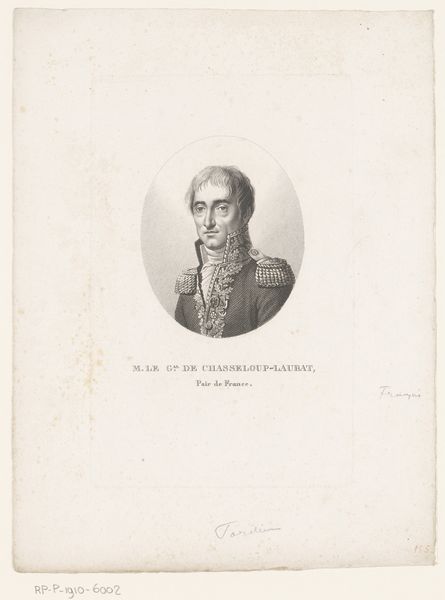
#
pencil drawn
#
photo of handprinted image
#
light pencil work
#
yellowing background
#
photo restoration
#
light coloured
#
old engraving style
#
ink colored
#
pencil work
#
golden font
Dimensions: height 219 mm, width 147 mm
Copyright: Rijks Museum: Open Domain
Curator: This is a portrait of François-Étienne Kellermann, Comte de Valmy, created in 1814 by Tony Johannot. It appears to be made with pencil and possibly some ink. It has such an old-world, elegant feel to it. What do you think? What jumps out to you? Editor: The yellowing paper immediately caught my eye. Given the likely methods of production at the time, involving hand-printing and possibly engraving, how might these materials have shaped its reception or even its purpose back in 1814? Curator: A fascinating question. Consider the context: printing was evolving, but still relatively laborious. Each print, while ostensibly identical, would possess slight variations due to the hand-crafted nature of the process. Perhaps this drove a culture of appreciating individual, subtly unique objects rather than striving for perfect reproducibility, like in modern digital prints? Editor: So, you are saying the limitations of production became part of the reception itself? Curator: Precisely. This artwork, unlike today’s mass reproductions, highlights a slower process, calling our attention to the work and skills of the artisans involved, perhaps even the engraver's unique "touch." It encourages us to think about how art production and its attendant labor influences cultural value. The inherent imperfections and subtle uniqueness would have underscored its value, wouldn’t you agree? Editor: Yes, absolutely. I hadn’t considered how the very process of making this influenced its perceived worth back then. It makes me consider how digital art’s reproducibility affects our engagement today. Curator: Exactly. Seeing this drawing through the lens of its production illuminates broader historical values and even shapes our understanding of current artistic practices and digital materiality. Editor: Thanks, this makes me consider art historical works more critically. It really does change how one appreciates even a simple portrait.
Comments
No comments
Be the first to comment and join the conversation on the ultimate creative platform.
